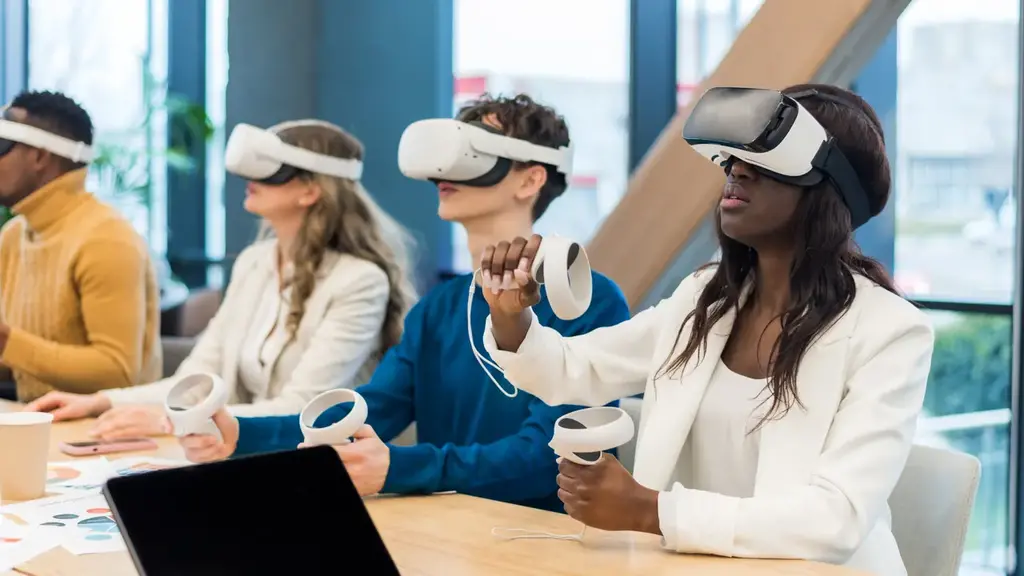Introduction to VR Training
Welcome to the future of training – Virtual Reality (VR)! VR training, also known as immersive training, is a cutting-edge method that uses virtual reality technology to create realistic simulations for employee onboarding and training purposes. Instead of traditional methods, VR training allows new employees to learn and practice in a virtual environment that closely resembles their real-life work settings. This immersive experience not only enhances learning but also reduces training time and costs, ultimately leading to a more efficient and effective onboarding process.

Advantages of VR for Onboarding
VR onboarding offers several advantages, such as increased engagement and retention. Employees can immerse themselves in realistic scenarios, allowing for hands-on practice and better understanding. Additionally, VR can provide a safe environment for employees to make and learn from mistakes without real-world consequences. This technology also allows for standardized training experiences, ensuring all employees receive consistent and comprehensive onboarding.
Understanding VR Theatres
To understand VR theatres, it’s important to know that VR stands for virtual reality. VR theatres provide an immersive, 360-degree experience for training and simulations. The technology allows trainees to feel as if they are in a real-life scenario, enhancing their learning experience. VR theatres are equipped with special headsets and sometimes hand-held devices that enable users to interact with the virtual environment. This technology is revolutionizing the onboarding process by creating an engaging and realistic learning environment.
Immersive Learning Experience
VR theatres offer an immersive learning experience by allowing trainees to fully engage with the training content in a realistic and interactive environment. This type of learning can enhance retention and understanding by integrating visual, auditory, and kinesthetic elements. The use of VR technology creates a sense of presence and enables trainees to practice skills, make decisions, and experience scenarios in a simulated yet lifelike setting. By providing a more engaging and impactful learning experience, VR theatres have the potential to revolutionize the way training and onboarding are conducted.
Benefits of VR Theatres in Onboarding
VR theatres offer a realistic and immersive onboarding experience that can enhance employee engagement and retention. They provide a safe environment for employees to learn and practice new skills, reducing the risk of mistakes in real-world situations. Because of their interactive nature, VR theatres can increase information retention and improve learning outcomes. The ability to customize training scenarios ensures that employees receive tailored learning experiences that are relevant to their roles.
Incorporating VR Theatres into Training Programs
Incorporating VR theatres into training programs allows for immersive and interactive learning experiences. With VR technology, trainees can practice real-life scenarios in a safe and controlled environment. It also provides an opportunity to enhance engagement and retention through a dynamic learning experience. Additionally, incorporating VR theatres into training programs can result in cost savings by reducing the need for physical resources and travel expenses. This cutting-edge approach aligns with the evolving demands of modern training and offers a promising future for onboarding processes.
Overcoming Challenges in Implementing VR Theatres
Implementing VR theatres for onboarding poses several challenges, including the initial cost of setting up the VR infrastructure, the need for specialized training for staff, and potential technical issues that may arise. Additionally, ensuring a seamless integration of VR theatres with existing training programs and overcoming resistance to change within the organization can also be challenging. However, with careful planning, clear communication, and effective troubleshooting strategies, these challenges can be successfully addressed to create an immersive and effective onboarding experience.
Designing Effective VR Training Programs
When designing VR training programs, it’s essential to consider the specific learning objectives you want to achieve. Ensure the content is relevant, engaging, and interactive to keep learners motivated. Utilize real-life scenarios to simulate practical experiences, and incorporate feedback mechanisms to enhance the learning process. Additionally, it’s crucial to optimize the program for ease of use and accessibility.
Feedback and Assessment in VR Theatres
In VR theatres, feedback and assessment are essential for improving training effectiveness. Through virtual reality, trainers can provide real-time feedback and evaluate learners’ performance in simulated environments. This allows for immediate adjustments and personalized guidance, enhancing the learning experience. Additionally, assessments within VR theatres enable objective measurement of trainees’ skills and knowledge, ensuring that learning objectives are met.
Conclusion: The Future of Onboarding
In conclusion, the future of onboarding looks promising as virtual reality (VR) technology continues to revolutionize training methods. VR theatres offer a dynamic and immersive experience that enhances employee engagement and retention of essential information. The interactive nature of VR onboarding ensures that employees have an in-depth understanding of their roles and responsibilities. Furthermore, VR onboarding provides a cost-effective and efficient solution for organizations looking to streamline their training processes. As more companies embrace the benefits of VR technology, we can expect to see a widespread adoption of VR theatres for onboarding, ultimately leading to a more skilled and knowledgeable workforce.
